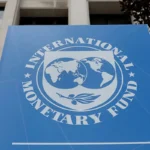
Geopolitical Tensions Drive Oil Markets Higher
Oil prices climbed sharply on July 2 after Iran suspended cooperation with the International Atomic Energy Agency (IAEA). This sudden pivot fuelled concerns of fresh instability in the Middle East and sent a ripple through energy markets worldwide. Brent crude surged nearly 3% to settle at around $69.11 per barrel, while U.S. West Texas Intermediate (WTI) climbed roughly 3.1% to close near $67.45.
What Iran’s Move Means
Tehran’s parliament passed a new law requiring the Supreme National Security Council’s approval for any future IAEA inspections, a move Iran says is in response to perceived bias and as justification for Israel’s recent strikes. While this shift doesn’t immediately disrupt oil flows, analysts warn it injects a geopolitical premium into oil prices, adding an extra layer of risk that markets are already pricing in.
U.S. Oil Inventories Weigh on Gains
Despite the sharp rise in crude prices, gains were somewhat contained by an unexpected build in U.S. crude inventories. The American Petroleum Institute (API) reported a 680,000-barrel increase in stockpiles, contrary to forecasts anticipating a seasonal drawdown. The Energy Information Administration echoed this trend, reporting a 3.8 million-barrel build, which capped the rally.
OPEC+ Output Plans Add Context
This market backdrop comes ahead of a key OPEC+ meeting scheduled for July 6, where producers are expected to lift output by roughly 411,000 barrels per day, continuing a trend seen since May. Meanwhile, Saudi Arabia boosted shipments by approximately 450,000 barrels per day in June, their highest monthly volume in over a year. Though these increases counterbalance some geopolitical anxiety, they haven’t fully entered global trade systems yet.
The Broader Regional Warning Bell
Iran’s pause in nuclear cooperation must be viewed in the broader regional flashpoints. June witnessed intense flare-ups, such as Israeli airstrikes on Iranian nuclear facilities and Iran’s threats, including parliamentary approval to block the Strait of Hormuz, the world’s most vital oil chokepoint. These developments inflicted a spike in oil prices in mid‑June, Brent briefly soared above $78, and renewed fears of supply bottlenecks.
Risk Premium and Price Projections
Most analysts agree that physical supply flows remain unaffected for now. But many warn that geopolitical tensions may see Brent prices trading as much as $12 higher than fundamental levels. Goldman Sachs, for instance, projects peaks up to $90 or $110 per barrel if Iran opts to disrupt oil shipments or close down the Strait of Hormuz. JP Morgan similarly cautions that such disruptions could trigger a “sustained oil-price shock.”
Currency and Demand Dynamics
Adding to these dynamics, a weaker U.S. dollar, its value recently sank to a three-and-a-half‑year low, has provided additional support to oil prices, making crude more affordable for holders of other currencies. On the demand side, gasoline usage in the U.S. remains below healthy summer benchmarks, API data suggests 8.6 million barrels per day, below the 9 mbpd seasonal norm, pointing to potential demand-driven headwinds.
Outlook: Tension, Trade, and Timing
Markets now pivot on two key drivers: geopolitical uncertainty and economic signals. The upcoming OPEC+ decision on supply for August, combined with U.S. non-farm payroll data later this week, could significantly influence oil’s path. If geopolitical strain persists, but supply increases continue, Brent may settle in a $70–75 range. However, any escalation involving the Strait of Hormuz could rapidly reignite fears and push prices into triple digits, in line with Goldman Sachs and JP Morgan scenarios.
Implications for India and Global Markets
Import-dependent nations like India are particularly vulnerable. Since the June spike, oil prices climbed from $64-65 to $74-75 per barrel, heightening domestic inflation risks and energy import costs. Experts warn that every $10 increase in crude could swell India’s import bill by around $13-14 billion and nudge inflation measures upward.
Conclusion: A Tug-of-War Scenario
In essence, oil markets are currently navigating a tug-of-war between dim economic signals, like higher inventories and weak fuel demand, and intensifying geopolitical flashpoints. The suspension of nuclear inspections by Iran adds fresh unpredictability, ensuring prices remain sensitive to regional developments. As traders and policy‑makers await clarity from OPEC+, employment reports, and Middle East diplomacy, over the coming weeks, oil is likely to remain volatile with a distinctly bullish tilt.




































Leave a Reply